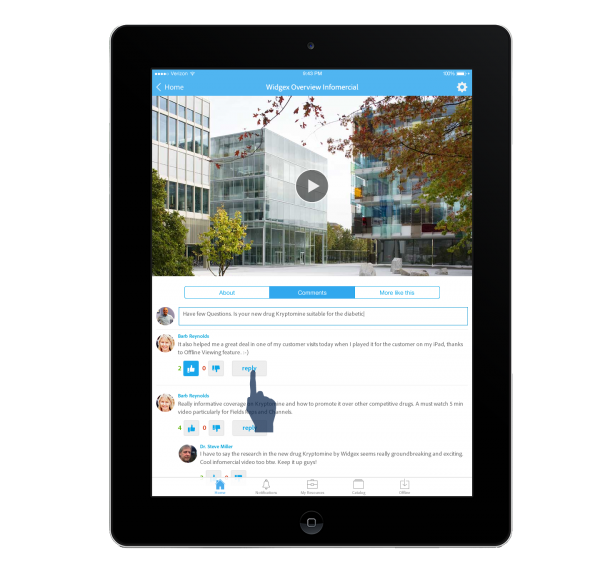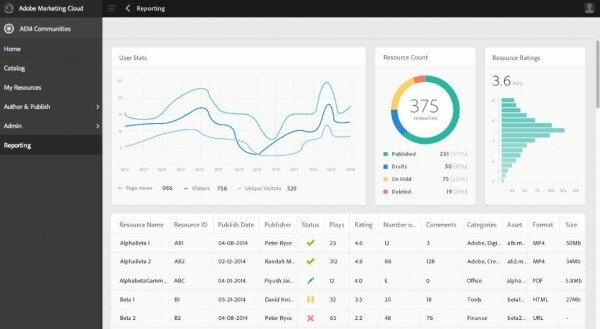Adobe Experience Manager Communities for Learning Bridges Employees and Customers Through Content
by Barb Mosher Zinck | May 14, 2014 4:05 pm
It’s times like this when you think that Adobe is one step ahead of other customer experience management vendors. While all focus their platforms on helping clients build great customer experiences, you don’t see much effort put into tools that help front-line employees who work with customers every day, that type of software is typically left to what we refer to as Collaboration or Enterprise 2.0 vendors.
It’s not that it isn’t readily acknowledged that customer loyalty and employee loyalty/engagement go hand in hand, because they intertwine greatly. But we don’t see solutions geared to support the needs of both customer and employee.
Communities for Learning
This is where Adobe Experience Manager Communities for Learning breaks that separation model. Communities for Learning is not the same as Adobe’s managed/on premises social communities, although I am sure there a relationship there of some kind. The new Communities for Learning is a pure on demand service (one of two Adobe has – Dynamic Media & Video is the other), created for organizations who want to spin up a community fast and focus on the getting content out to community members.
Adobe’s Director of Product Marketing, Loni Kao Stark, talked with me about the purpose of these Communities for Learning. They focus on shared learning, providing an environment for front-line employees to have easy access to the information they need to do their jobs well.
Consider that you are constantly developing content for your customers. Content Marketing is not a craze, it is the way to communicate and engage with customers and prospects. You develop a lot of material that is not only focused on your products and services, but also on the stories that relate to the customer journey. But are you developing the same material for your employees?
You should be, because as Kao Stark clearly points out, at some point those customers and prospects are going to talk to a human. Now whether that conversation takes place in a brick and mortar storefront, on a telephone, or in the comfort of their own home, these customers will expect that your employees have seen the same information that they have.
Kao Stark says customers are smarter, and your organization needs to be more agile to keep up with them. One of the best ways to do that is to ensure you are giving your front-line employees the tools they need in a way that’s easy for them to use and consume.
Offering Communities for Learning in a SaaS model and including a mobile app out of the box (plus a a way to build custom apps) are both ways to help do just that.
There is support for both structured (SCORM and xAPI (Tin Can) compliant eLearning content) and ad hoc learning, so if your organization wants to take a formal approach to learning the content available in your community, you can do that, or if you simply want the information available, you can do that as well. In addition, there are social features such as rating and tagging, along with forums to help surface the best and/or most important content.
You likely need to measure the usage of your community as well and Adobe does offer some good reporting at both the individual learner level and by the community overall.
The nice thing about Communities for learning is that it integrates seamlessly with Experience Manager, and that means you have access to all those Shared Assets developed for customers. So you create one set of information, re-purposing it as required depending on your audience – internal or external. But, if you don’t already have Adobe Experience Manager, and you only want to use Communities for Learning on its own, you can.
Keeping Brick and Mortar Relevant
Something else Kao Stark said hit a nerve. It’s something she discussed at the London Adobe Summit during her Future of Web Experience talk this week. She said that digital pure plays are working hard to make the in-person channel irrelevant. That is putting an enormous amount of pressure on brands who started with a brick and mortar model to find ways to keep that from happening.
They will do that, Kao Stark says, by making that in-store experience enjoyable. And that’s only going to happen through the employees on those front-lines. Providing the right tools, training and knowledge for employees to learn, grow and really be a committed part of the organization is key. Communities for Learning is a great example of one of these tools, and it will be available this summer.
Share and Enjoy
Source URL: https://digitaltechdiary.com/adobe-introduces-experience-manager-communites-learning/702/


